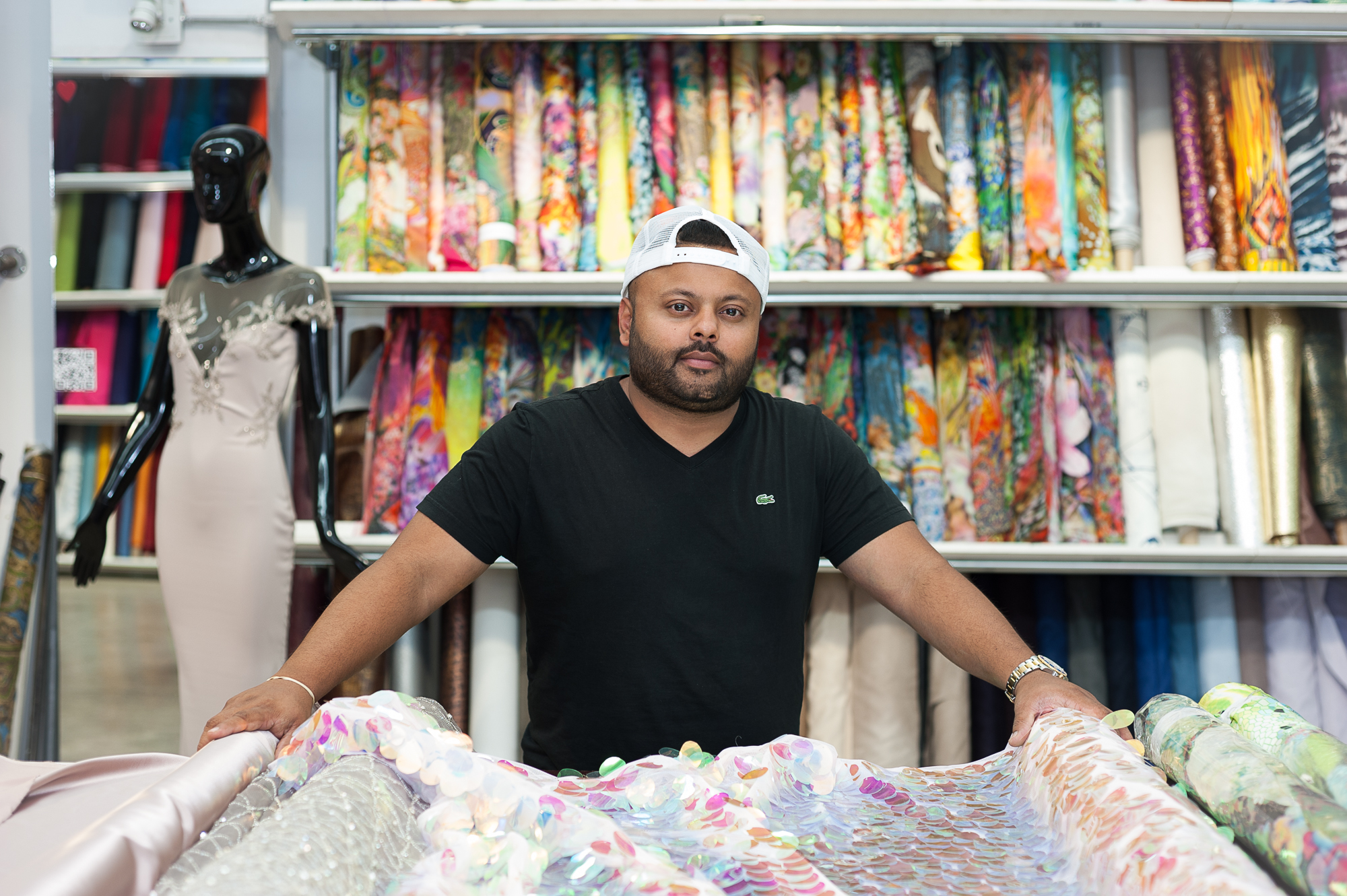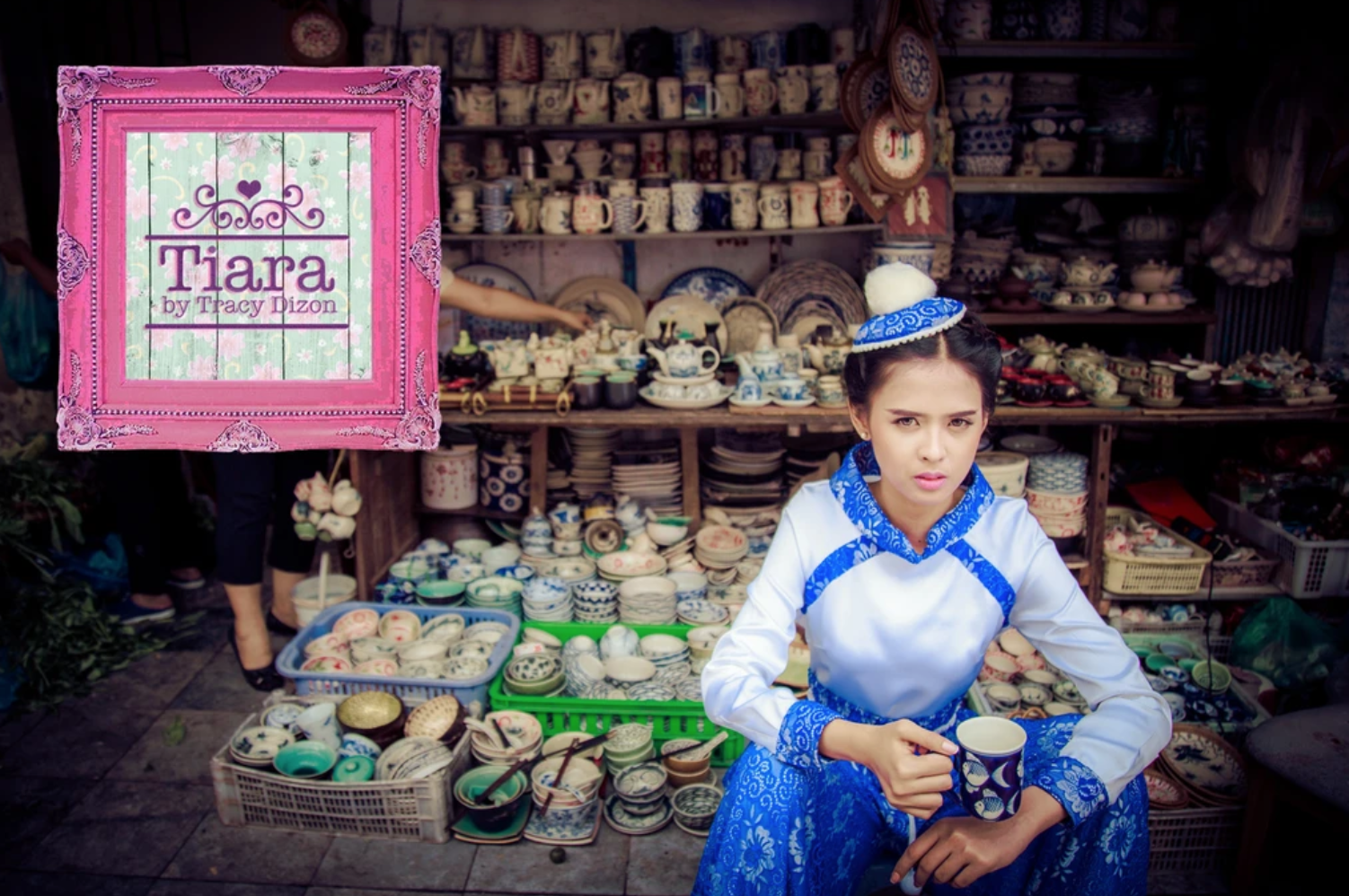The Fabric House
Old School Business with a New School Mentality
At age 13, Ali Shaikh, Fabric House owner, remembers his father bringing him to work and telling him to start learning the family business, where he would work on weekends and after school. “School doesn’t really get you ready for the real world. There’s nothing like hands-on experience and getting your hands dirty,” Ali explains.
The Shaikh family has been in the fabrics business for 34 years. His father, Siraj Shaikh, started out working in a fabric store when he came to the U.S. from India with a dream to open his own store.
Siraj opened his first store after working seven days a week for four years, while living in a one-room flat, which Ali describes as a space that he couldn’t believe actually existed in Manhattan. The family’s first store opened in a 600-square-foot space near Port Authority, which the family ran for eight years.
“If we had three customers walk in, it was full,” states Ali. They then moved to a 2,200-square-foot location for 22 years, which remains open while they build out their new space.
Your family has been in the fabric business for two generations. How has it changed?
“The economy itself has changed so much. It’s a domino effect. When the economy is doing well, business goes well. When the economy is down, the business suffers. It’s all tied together. During the heyday, everyone wanted to make their own clothes to be different. Fashion schools didn’t have enough teachers to handle the demand,” Ali explains.
“Now there’s so much technology and information. Social media designers are selling a simple hat or jacket and creating a business with 100 thousand followers; at the same time a number of major brands are closing stores and filing for bankruptcy. If you have 100 thousand people that are willing to pay $200-$300 dollars on your product, you have a business,” he says.
He thinks more small designers will do better than some department stores. And the Fabric House wants to be there to support these new designers.
You describe your business as “keeping it old school.” How do you accomplish this in a technologically changing industry?
Apparently, not having a website is one way Fabric House keeps it old school. Ali explains, “With a site in this business you open yourselves up to a lot of fraud. I would be hurt if we spent time putting together an order and it turned out to be fraudulent.”
Fabric House wants to stay a mom-and-pop business that’s hands-on and one-on-one. This way, they know what their customers want and get who they are. Ali adds, “With this approach, we don’t need thousands of customers, just our core customers that become like family.” This was shown when he called to check on their customers in Florida after Hurricane Irma. The interaction with his customers is where his foundation was built from working with his father.
You’re opening a new space in New York’s fashion district. How is it different from your original location?
Ali describes the new 7,500 square-foot location, which is right down the street from their old location, as having everything a new designer needs under one roof. They will do pattern making, sampling, small production, buttonholes, zipper insertions, and are even building out a showroom to meet with buyers. Normally, a designer would have to go to five different places.
Why do you have your own in-house designers and what do they do?
The new location has three in-house designers to handle bridal parties that often want to create something unique; new business models that are working with investors to start their own line; and also to have someone create sketches to create patterns and samples.
How does this new fabric business model help new designers?
“We plan to help young designers grow so they can pay it forward. We won’t charge designers to utilize the space to create designs, even if they don’t purchase fabric from us. We’ll just get a small commission,” explains Ali. They will also host fashion shows. This will give new and emerging designers a space to build. He compares it to a WeWork for fashion.
“It’s a great feeling to know you’re providing space to help people and create more jobs. There’s no competition in the field of helping people. You can turn around and no one will be chasing you,” he says with a smile.
What do you say to experts that tell new designers not to buy retail fabrics due to markups?
“I say, let’s not all be computers. You have to touch and feel fabric. It’s not like selling staples. If something goes wrong, you need to speak with someone to help fix the issue. No website in the world can compare to the walk-ins that come in the course of a day from all over the world,” he explains.
Their fabric has been purchased for Broadway plays, movies, a Queen from Jordan, ambassadors, senators, even a company that made a piece for the former First Lady Michelle Obama.
The Fabric House plans to duplicate this new model in stores in Chicago, Dallas, and Atlanta.
By: Theresa Majeed, Photography by Luis Chimbo
Asian Designer Brings Spirit of a Culture to New York Fashion
If you want to know what a quirky, super talented illustrator, milliner and Asian streetwear designer balled up into a small petite package (85lbs and 5’1”), then look no further than Tracy Dizon.
Even as a teenager, Tracy already had a dream of taking on the New York fashion industry by aspiring to be a bold influencer. She began following her dream by applying to the University of the Philippines Diliman.
Tracy then thought her dreams would have to be deferred as she faced a big life challenges after becoming pregnant at 20. After giving birth, she almost quit fashion thinking the flamboyance of fashion didn’t fit a “single-mom” lifestyle. But remember, this is the same quirky, super talented designer. So, instead of accepting thoughts of a dream deferred, Tracy was both motivated and humbled by her situation. Instead of focusing on what she stood to lose (money, fame, friends, etc.) Tracy chose to focus on her brains and talent, the things no one can take away. She explains it best by saying, “The Universe conspired, telling me to just keep going…that this was what I was meant to do”.
Tracy got back on track by continuing college and receiving her BS in Clothing Technology at the University of the Philippines Diliman.
Tracy experienced different challenges than her classmates. She recalls times when her infant son would try crawling on the sewing machines when he tagged along with her to class, while she carried diaper bags, sewing materials, and breast-fed at the same time. During this time, her dreams were not only for herself but for her son as well, who she says has been her #1 fan, groupie and P.A.
Tracy has been hard at work making a name for herself in the Philippine and global fashion industries as a fashion stylist, TV and film costume designer and retail merchandiser. She launched her womenswear brand in her namesake, Tracy Dizon. She then followed it up by launching her millinery brand Tiara by Tracy Dizon, featuring hats and headpieces. Tracy had become a household name in the Philippines after her stint as a contestant on the popular Project Runway Philippines. She represented her country in the 47th Japan Fashion Designer Contest in Tokyo and in the People’s Choice Fashion Designer in Boardwalk Business Venture’s in 2014. She was also a finalist in the Air Asia Runway Ready Design Search and a Semi-finalist in the Vietnam Emerging Designer Contest in 2016.
As the winner of the Inaugural RiseAD (Art&Design) Designer Competition, Tracy traveled from Manila, Philippines to Brooklyn, NY (over 13,000 km) for her spot in the 11th bi-annual Fashion Week Brooklyn Show.
Tracy’s S/S 2018 collection began to take form as a young women’s heart was broken by love, and emerged into life like sketches representing Hanoi tea cup shops, flowers, dolls and emerged into what is now a vibrant 17 looks collection including garments, hats and shoes created by a young woman who refused to be defeated by the pains of unrequited love.
Her concept titled “Miss Hanoi: La Douleur Exquise” is a semi-autobiographical note from Tracy’s memories from a visit to the bustling city of Hanoi woven into an ethnographic account of Vietnam’s material culture. The collection consists of an eclectic ensemble inspired by the beautiful traditional Ao Dai Dresses and Hanoi culture, Vietnamese fabrics, military uniforms, and icons of Vietnamese history. Every girl can be a “Miss Hanoi Girl” in my clothing, Tracy expressed.
When asked how it felt to win the competition, Tracy said “conquering the international stage among a roster of featured emerging International Fashion Designers at Fashion Week Brooklyn is an achievement as Brooklyn is the emerging young art and fashion hub in NYC.”
Every lay-out of Tracy’s Miss Hanoi Collection tells a story of her journey throughout Hanoi. It’s what Tracy describes as “the untainted culture and passionate fire of nationalism that runs through the spirit of the Vietnamese People,” which inspired her to create pieces with a play of colors and prints, creating her own modern interpretation of their beautiful traditional clothing and rich fabrics.
On top of her clothing and hat collections, Tracy is currently working on a RiseAD x Tracy Dizon Sunglasses Collection, which will feature prints from her collection infused into RiseAD’s frames. Tracy describes it as an East meets West collaboration.
Tracy’s vision is to see fashion icons like Anna Dello Russo and Misha Janette, artists like Bjork and Katy Perry or even the young fashion blood like Tavy Gevinson rock her “Miss Hanoi” looks too.
by Theresa Majeed


